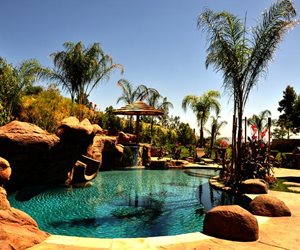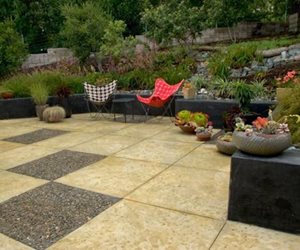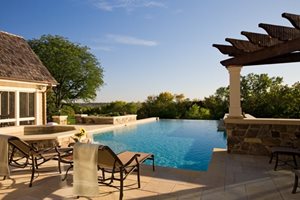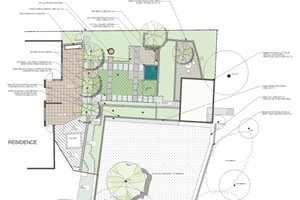7 Essential Landscape Design Considerations
Key factors to think about when planning the yard of your dreams
An awesome backyard like this one starts with a purpose in mind. The owners of this yard wanted to be able to swim and entertain. The Green Scene in Northridge, CA.
Sometimes beginning a landscaping project can seem overwhelming. Often you hear landscape professionals refer to a process termed "Analysis & Inventory." Don't worry, all this boils down to is knowing what you want and what you have to work with. A landscape designer will help you work through these seven landscaping considerations. Take a look at them ahead of time and you'll be well on your way to having the yard you've always wanted.
Use & Purpose
When beginning a landscaping project the first thing to consider is how you want to use the space. Decide what the desired purpose, or purposes, of your ideal yard are before making any other decisions. Common uses for outdoor spaces include:
- Entertaining
- Cooking and dining
- Swimming
- Playing
- Relaxing
- Gardening

Here you see a wonderful modern garden - the style of your landscaping is the last thing to consider. Jeffrey Gordon Smith Landscape Architecture in Los Osos, CA.
People & Pets
Next you'll need to think about who will be using the space. Will your landscaping need to accommodate young children, or will it be primarily an adult retreat? Don't forget to think about pets—animals often dictate landscaping decisions.
Environment & Climate
Now it's time to take an inventory of your property. You'll want to note things like:
- Sunny areas
- Shady areas
- Views
- Wind direction
- Water flow and drainage
- Control points: Identifying non-negotiable design constraints on the property, i.e. door thresholds, grade, etc.
Soil Type & Nutrients
Next your attention should be turned to your soil. It's important to make sure your soil has all the right nutrients to support the plant material you select. Your soil, which may be mostly sand, clay, or rock, will dictate which plants you should grow. A landscape designer can run soil tests for you and amend the soil if necessary.
Planting Zones
An important factor to consider before selecting plants is your planting zone. Your planting zone is determined by climate conditions such as temperature and rainfall. Knowing your planting zone will help you and your designer select plants that are appropriate for your location, and thus much more likely to thrive. You can look up your planting zone online through the National Gardening Association. If you live in the West you may have better luck using Sunset's planting zones.
Hydrozones
Once you have an idea of what plants you will be using, start thinking about how water behaves in your yard. If there are certain areas where water collects you'll want to group plants there that need a lot of water. On the other hand, if there are certain areas where water drains quickly, you'll want to group plants that that like dry conditions. This process is often referred to as planting according to hydrozones.
Garden Style
The final thing to think about is aesthetic appeal and style of your landscaping. Consider the interior and exterior style of your home and try to create unity between these and your landscaping. Strive to make your outdoor space one that reflects your personality and makes you feel happy and relaxed. For a little inspiration check out these garden styles, which include Japanese, modern, cottage and desert.

 Backyards
Backyards
 Front Yards
Front Yards





